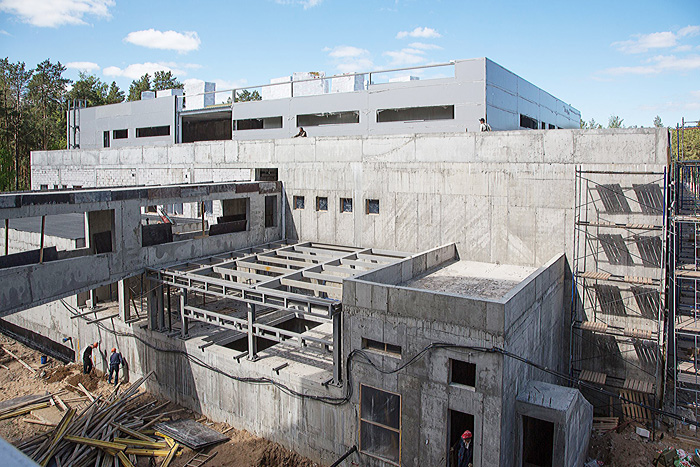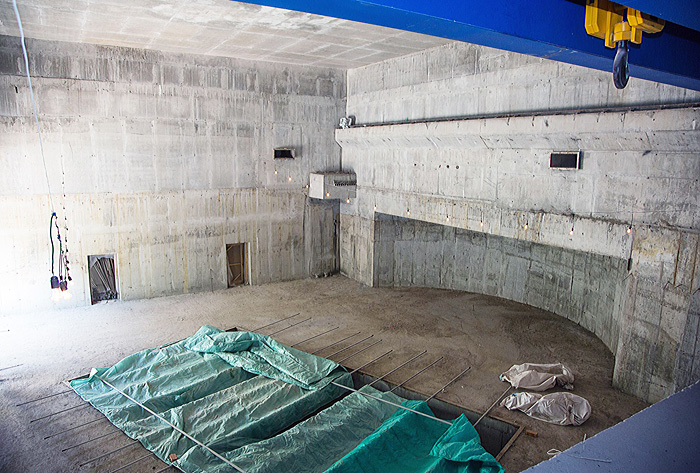New Seven-Year Plan. Six months before launch
Organization, 07 July 2016
The programme of the recent 44th meeting of the JINR Programme Advisory Committee for Nuclear Physics was especially full of content because this is the last meeting before the adoption of the Seven-Year Plan for the Development of JINR 2017-2023. The main provisions of this programme, discussed at the session, were associated with development of neutron nuclear physics at FLNP JINR using the IBR-2 reactor and with adjustment of the IREN neutron source to the design parameters, conducting both fundamental and applied research at these facilities. The research programme in these fields has been approved.
The second large block of issues was associated with the Flerov Laboratory of Nuclear Reactions. A report on the results and plans for the next seven-year period was presented. Reports both on the research and the accelerator parts were met by reviewers with great approval. The Laboratory has good prospects and seeks to move beyond element 118; there are further plans to attempt to synthesis element 119, as well as element 120. This requires new research, as well as the factory of superheavy elements which, according to plans, will be launched in the end of 2017. Specific facilities are being established at a new accelerator for the purposes of new experiments, and an experimental hall is being built successfully. The new hall will employ a brand new gas separator and a new preseparator for chemical research.
Along with this, a search for new ways of synthesis which means the study of reaction mechanisms will be continued at the operating accelerator. It is very important that the Factory of superheavy ions will enable us to start spectrometric investigation of superheavy nuclei. At the same time, a facility for laser spectroscopy which is aimed at the study of some astrophysical aspects is being established.
The whole set of projects that compose this great theme of the Flerov Laboratory of Nuclear Reactions was approved by the Programme Committee; suggestions to have a new hall for test beams that Georgi Gulbekian mentioned in his report were voiced.
 Final construction activities in the building of the DC-280 cyclotron
Final construction activities in the building of the DC-280 cyclotron
In the fields of accelerators: it is planned to start assembly of the DC-280 in the new hall at the beginning of October. The whole next year, the first year of the new Seven-Year Plan will be devoted to installation of equipment, adjustment of all lines and cabins. Of course this is a huge undertaking and it is hoped that there will be a real opportunity to start the first beam irradiation by the end of 2017. The second issue is related to the fact that with the launch of the factory the U-400 accelerator needs to be shut down for reconstruction, so it will be stopped in 2019-2020 for a year to upgrade it and launch. A similar task is also facing the U-400M accelerator which is mainly focused on exotic nuclei. The equipment is already being tested; the first experiments at one of the world’s most powerful mass separators, the ACCULINNA-2 facility will be started at the end of the year. And here is a very wide field for the study of light exotic nuclei with an excess of both neutrons and protons. And this programme has been also fully approved.
 Assembly of the accelerator complex will be started very soon
Assembly of the accelerator complex will be started very soon
The next topic of the programme is the study with light mesons in the Dzhelepov Laboratory of Nuclear Problems. The СOMET project report was removed from the agenda; its consideration was postponed to January. Of some importance to this decision was the opinion of the DLNP Directorate for that decision. As well as for decision on some other projects conducted for a long time, without any significant results.
As for neutrino physics, the focus was on two home projects: a facility at the Kalinin nuclear power plant and the Baikal neutrino telescope, where work is carried out very actively. And the Dzhelepov Laboratory of Nuclear Problems quite sensibly came to the selection of non-JINR experiments, and focused on a few, where the contribution of DLNP employees is especially significant. The JINR neutrino programme has a very good progress and today it is the real face of the Dzhelepov Laboratory of Nuclear Problems.
Issues related to the new rules of evaluation of projects, organization of work of the Committees were considered. For these purposes the Committees experts asked for certain time and they were provided with all requested information. This work is being done at the meetings of all Committees and it is assumed to develop a joint opinion of all three Committees. The major debate focused on the system of evaluation of projects. The majority of the PAC for Particle Physics and Nuclear Physics members supposes that the achievement assessment should be applied, not arithmetical methods.
As usual, scientific reports and posters of young scientists of the Frank Laboratory of Neutron Physics were presented at the PAC meeting. As always, young scientists of the sector of Marina Frontasieva made good presentations. On the whole, the session was very dynamic. There were lively and interested discussions, many questions were delivered to speakers. All presented reports were made at a good level.
On materials of the article of Evgeny Molchanov,
Photo by Igor Lapenko